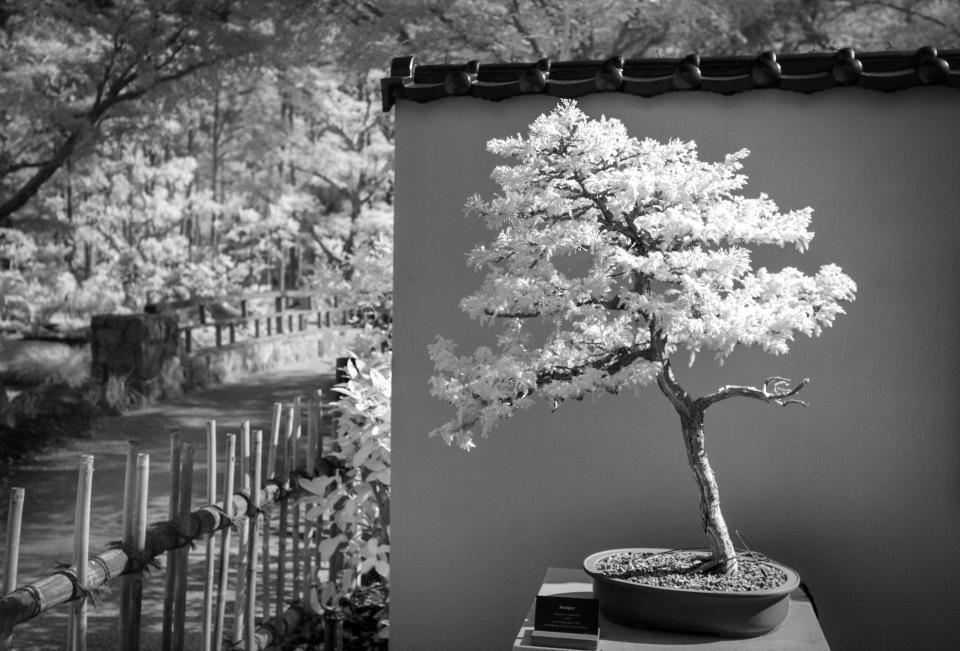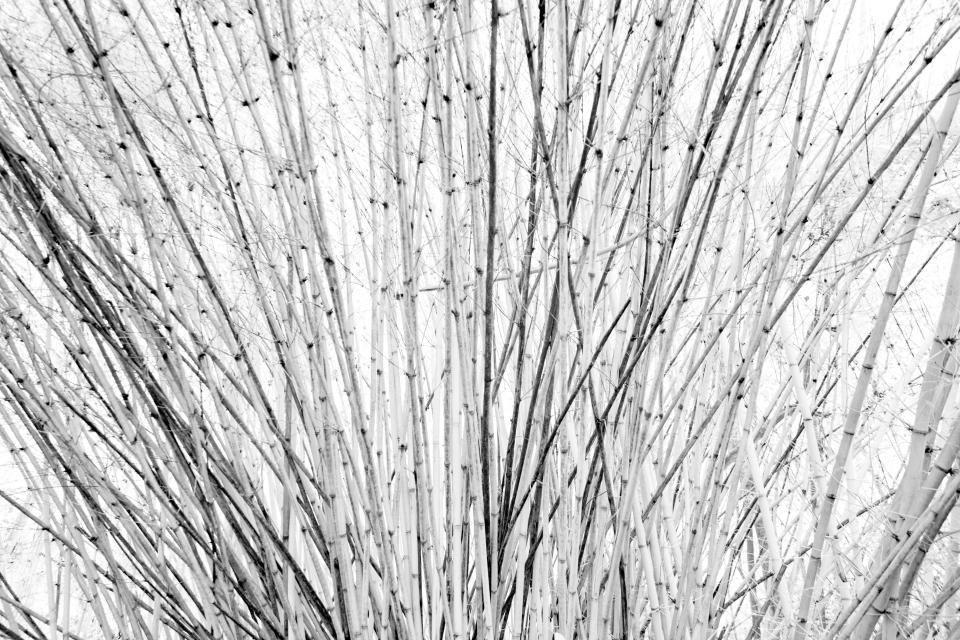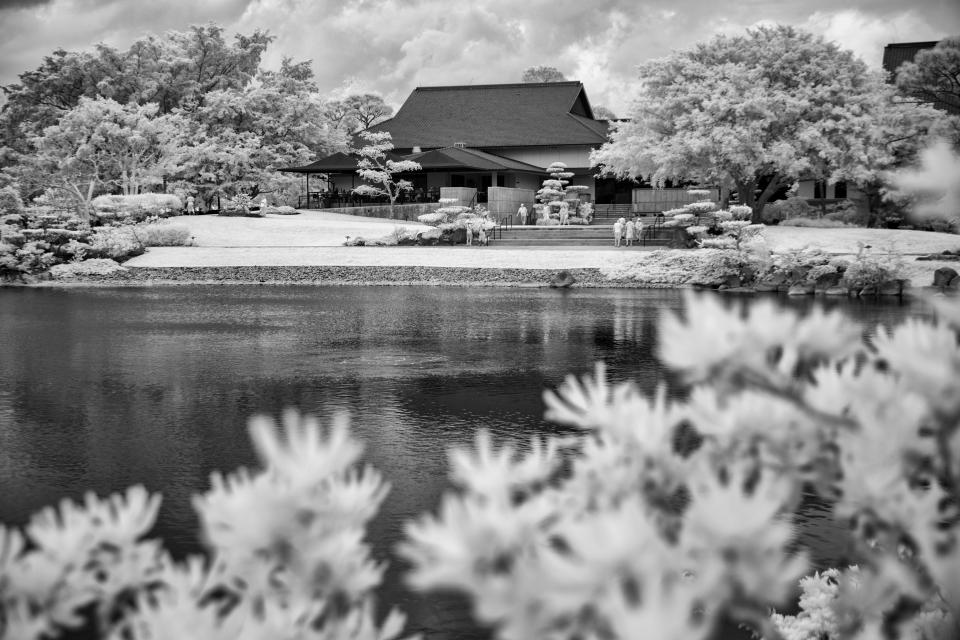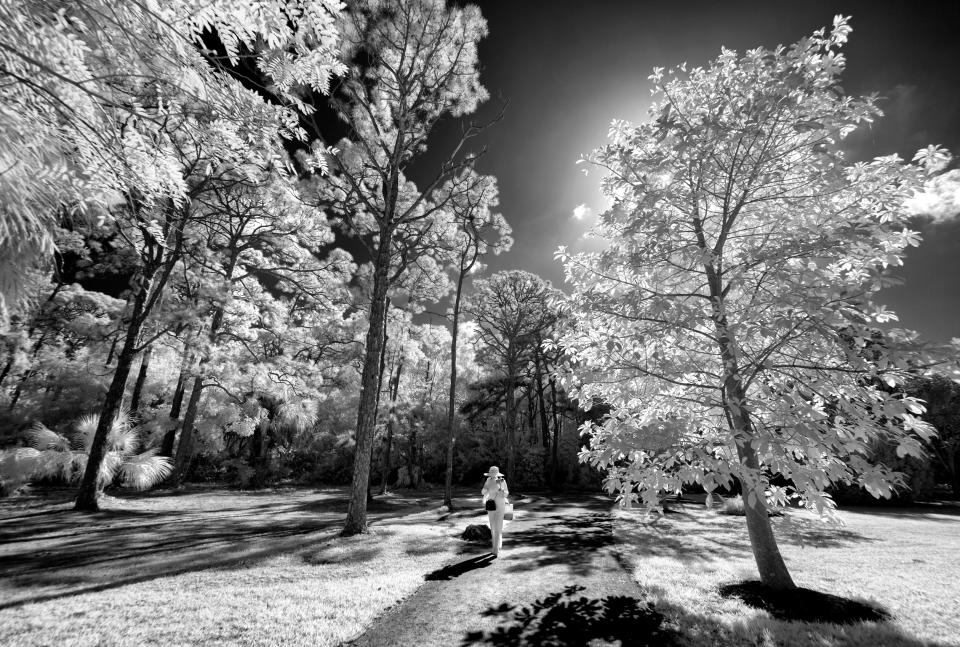Infrared camera offers fresh views of 40-year-old Morikami Japanese Gardens near Delray
The Morikami Museum and Japanese Gardens have graced Palm Beach County for more than 40 years, and the landscape there is always elegant and uplifting. But as humans our vision of all the beauty that is there — and everywhere around us for that matter — is limited. Viewing the gardens through quite literally a different lens, therefore can be revelatory.
Using a camera converted to infrared to capture the longer wavelengths that are ordinarily invisible to us, Palm Beach Post photographer Greg Lovett has toured the Morikami grounds to give us a fresh perspective. Infrared photography produces deeply contrasted black-and-white images, delivering dark skies and water, with white clouds and foliage.

More infrared photography: See The Honda Classic golf Infrared photographs
More reasons to get outdoors: Best waterfront restaurants in southern Palm Beach County for dining and drinking

The 200-acre gardens and museum near Delray Beach also have a rich history that inform this visual tour.
The story begins in the early 1900s with the establishment of the Yamato Colony, a small group of more than a dozen Asian farmers working land in what is present-day Delray Beach and Boca Raton. Though the colony eventually grew to a population of roughly 50, with a post office, railroad station and acres of peppers, pineapples and tomatoes, it did not endure. The colony officially dissolved in the 1930s. But some stayed.
From Japan to Florida, laborer to landowner: George Morikami

This account is from the Post's former history columnist Eliot Kleinberg:
George Morikami had come as an indentured laborer, paying $150 to a Japanese silk merchant in Miami for his passage and room and board. He had to work three years to pay it back and earn a $500 bonus. But his sponsor died and left him without return fare.
Morikami never would return to Japan. He stayed. And kept planting, long after the colony disbanded. Soon he began acquiring land. Eventually, he owned 1,000 acres. His fortune during the 1920s totaled almost $250,000 — about $3.8 million in today’s dollars.
Beautiful photography by Greg Lovett: Blooming flowers and trees signal the start of summer in Palm Beach County

In 1941, according to Boca Raton Historical Society archivist Sue Gillis, the federal government used eminent domain to seize land from about 50 families, some of them ethnic Japanese and two of them families from the Yamato colony. They likely were well underpaid. She said Morikami didn’t own any of the seized land, although he did have some assets seized.
The land became the Boca Raton Army Air Field, which later would be turned over to the state and would become Boca Raton Municipal Airport and Florida Atlantic University.
After the war, Morikami slowly built his fortune back up and amassed 200 acres. He could have sold it for millions, but he gave it to Palm Beach County for a park “because America has been so good to me.” A few weeks before his death in 1976, he said, “I came with nothing and now I’m leaving without anything.”
The museum opened a year later.

This article originally appeared on Palm Beach Post: Morikami Museum and Japanese Gardens as seen through infrared lens
